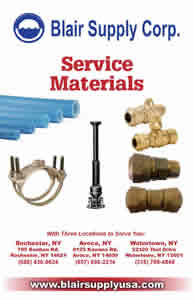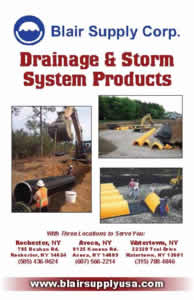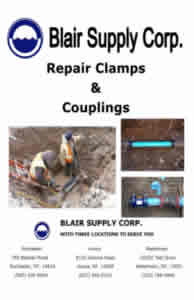Blog
7 Reasons To Invest In American Infrastructure
American is a large country with a vast, complex infrastructure that constantly needs to be maintained and upgraded. Without infrastructure, we wouldn’t be able to get around the country and we wouldn’t have the same privileges that are available today that weren’t a hundred years ago. Think, for example, the only reason we have internet or running water is because of infrastructure.
However, unfortunately the government and other organizations have not kept up with the general population’s usage and demand for infrastructure. According to The American Society of Civil Engineers over $2.5 trillion would be needed over the next 10 years to get our infrastructure back to standard with the state of the country’s roads especially in bad shape. In fact, one in five of our roads is considered in poor condition and dangerous; one in five of our bridges is considered deficient. If that alone isn’t enough, here are some other reasons to invest in infrastructure.
1. Delays Costs Money
The longer infrastructure is left unmaintained, the more money it actually costs in the long run. It’s actually much cheaper to repair a bridge than to rebuild it when it’s on the verge of collapse. One out of every five miles of highway pavement is in poor condition and our roads have a significant and increasing backlog of needs in order to be fixed to standard. The American Society of Civil Engineers found that the annual collective cost to cars from unrepaired or poor infrastructure resulting in unnecessary ware and tear on their vehicle was more than $67 billion — $324 per driver. Then, there is the fact that more than two out of every five miles of America’s urban interstates are congested and traffic delays cost the country $160 billion in wasted time and fuel to the average person, not to mention the loss of productivity to the economy.
2. Building Infrastructure Creates Jobs
Job creation is an important aspect of both government and companies alike and there is not better way to create jobs than with some big infrastructure investment projects. Infrastructure projects generate nearly 40 percent more for the economy than an across-the-board tax cut, and over five times as many as temporary business tax cuts. We need to squeeze as much job creation out of each dollar of cost, and infrastructure certainly is a great way to do that – it was what started the United States on becoming a superpower after the Second World War.
3. It Saves Lives
After years of decline, traffic fatalities increased by 7% from 2014 to 2015, with 35,092 people dying on America’s roads. With better, more efficient infrastructure, less people will die on poorly maintained roadways, bridges and other buildings. When we commit to increasing the safety of our infrastructure less accidents happen.
4. Be More Competitive In The World Economic Market
Road congestion led to $300 billion in direct losses to the economy in 2018 alone. These losses have to be passed onto the consumer who then has to pay more. The United States now ranks 16th overall and sixth among our top trading partners when it comes to our transportation infrastructure. Considering we are the most economically powerful country in the world, that isn’t very good. And with the president’s recent ‘Buy America’ executive order people should be saving money on American goods, not only making domestic goods more attractive but more available across the country.
5. We Can Save Time
It has been estimated that Americans collectively spend roughly 600,000 years stuck in traffic annually. Americans also collectively wait more than 200 years in airports each year, costing $8.1 billion annually to the airline industry alone. This astounding figure could quickly be remedied with better infrastructure saving Americans a lot of time. We already spend more time in the office than most Europeans, Asians, and South Americans but with better infrastructure we could improve our lives by spending less time on the road and more time with our families.
6. We’ve Got Cheap Financing
Despite the debt the U.S. government carries, as we mentioned previously, we are still the most powerful economic engine in the world with access to cheap financing through government bonds. States governments are facing nearly $150 billion in shortfalls in this fiscal year and the next, and, unlike the federal government, states generally cannot run deficits. The federal government could borrow money at a low rate allowing us a much-needed infrastructure upgrade.
7. Infrastructure Can Help The Environment
Everyone can agree that walking trails, complete streets, energy-efficient renovations, and bike lanes are good for the general public, but should they be paid for with public money? This is the current policy of the FHWA, which funds trails and bike lanes through its Transportation Alternatives Program, often making these sorts of projects conditions for approving larger projects. If we create more infrastructure using LEED (Leadership in Energy and Environmental Design), a popular rating system used by the non-profit U.S. Green Building Council it can be more expensive in the short term but is beneficial to all of us down the road.
Lots of Good Reasons To Invest In American Infrastructure
The bottom line is that we need infrastructure to work, which gives the economy more jobs and increases the Gross Domestic Product (GDP) boosting the livelihood for all Americans. So why is infrastructure in such bad shape? Part of the reason is that neither republicans or democrats can agree on what type or projects should be funded and how. In theory, infrastructure is not partisan, since both parties agree that it is highly necessary, and severely under-maintained. Since 1956, when the federal highway fund was formed, building transportation infrastructure, in particular, has been mostly a federal task, with nearly 80 percent built using the federal gas tax. But recent estimates suggest that the fund could soon run out, prompting the government to propose a new $300 billion plan. Whether the plan will be pushed through is anybody’s guess.
Putting transportation aside for a moment and looking at, for example, water infrastructure which is in equally bad state of disrepair. Some of these problems include broken pipes and overwhelm treatment capacity. The United States Environmental Protection Agency estimates that 23,000-75,000 sewage overflows occur each year proving that infrastructure of all types need to be upgraded.






